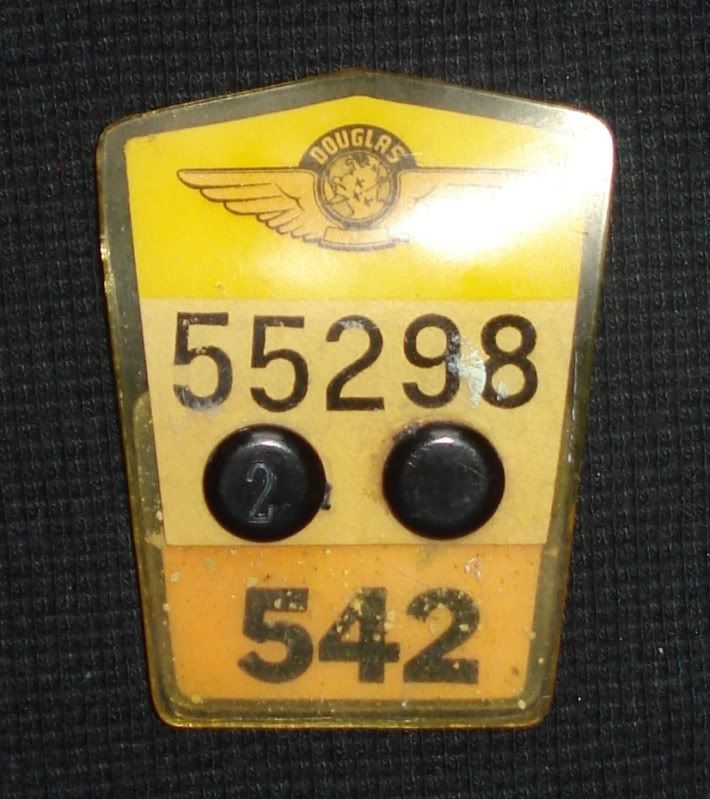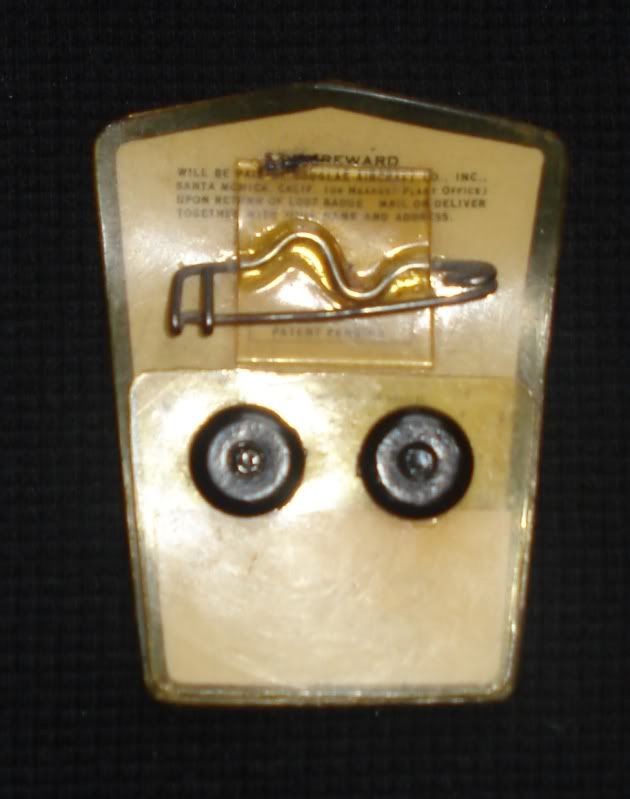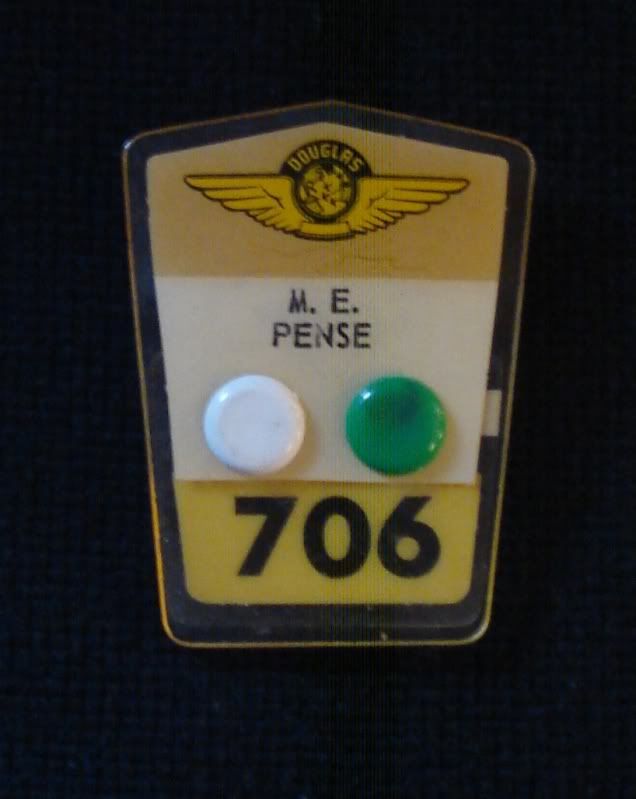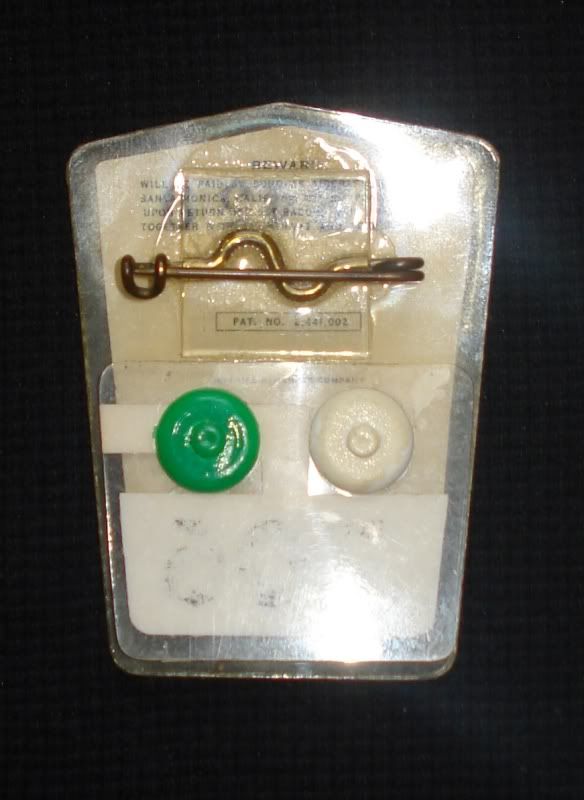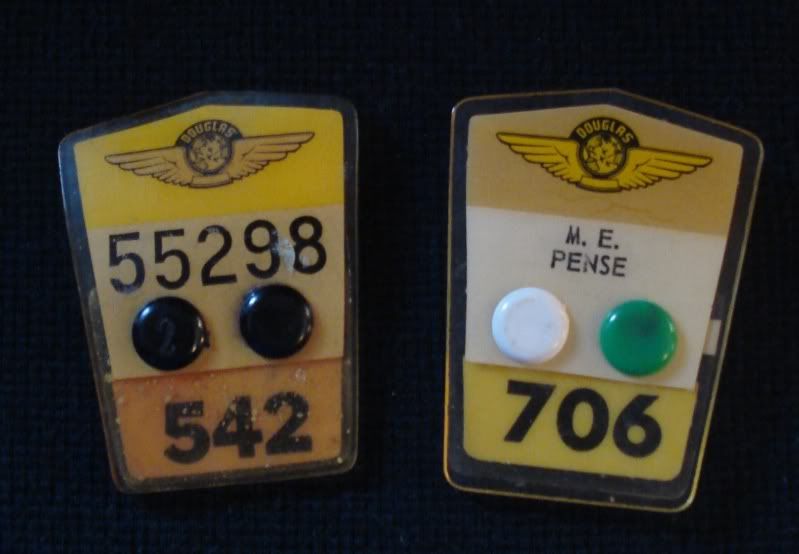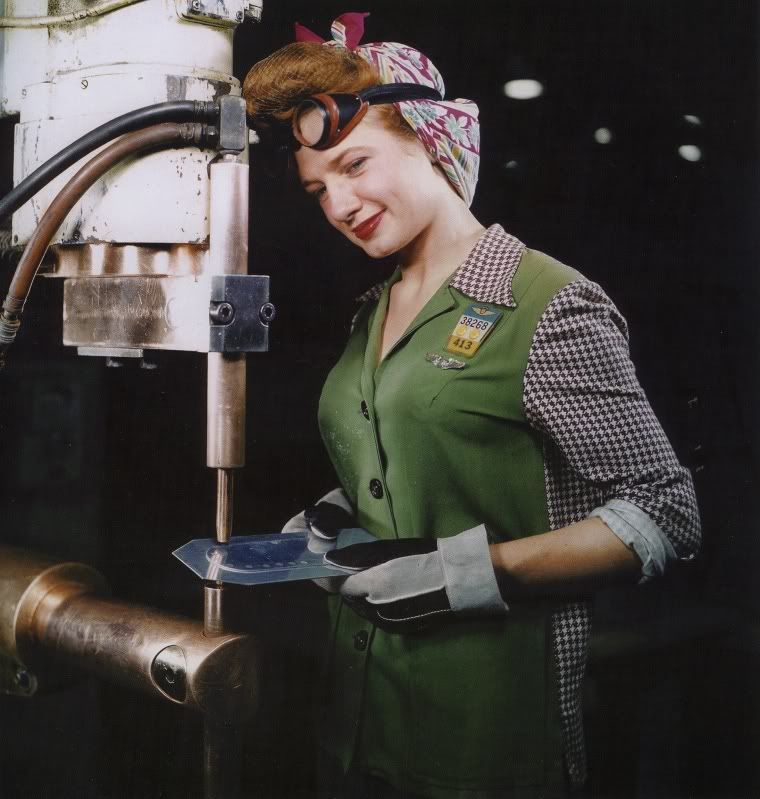Hello all,
I figured that I would go ahead and update my own thread, and answer my own question. Apparently I posted this question in 2007, and it has only taken me 4 years to figure it out. Warning: this is a small rant/dissertation on an incredibly obscure and small piece of WWII aircraft production. If you aren't the least bit interested, click "back" on your browser and continue on with your day. If you are interested, however, consider yourself forewarned!

Below are some photos of WWII Douglas Aircraft badges used in Douglas plants across the country. According to the information on the back of the badges, they were made by (or with the cooperation of) the Jeffries Banknote Company in Los Angeles. Pictured are two styles: the one with just numbers is the typical badge, with the top number being the employee number and the bottom number being the department number. The second style with the name typed into the badge is apparently a management or special guest badge- I have seen black and white photos of the Tulsa plant manager's badge, and it is similar to this one with his name printed instead of an employee number. The Tulsa Municipal Airport manager, though not a Douglas employee, was a regular visitor and as such was awarded a similar badge with his name instead of an employee number.
The colored buttons, which are plastic or possibly bakelite, were apparently used to designate to what part of the plant a particular employee was allowed access. Various color combinations indicated different areas of the plant. Some of the colored buttons also had numbers on them. I have no idea what the numbers indicated, other than to hazard a guess that they might have played a role in the access indication system. If you look closely at the regular employee badge, one of the black buttons has a very faint "2" etched/pressed into it.
The badges themselves are very lightweight, being made of a laminated plastic material. The upper 2/3 of the badge is a single piece, and the lower 1/3 with the department number is separate and held onto the upper part by the buttons. Could it be that this allowed employees to change departments without having to issue a new badge, but just requiring a replacement of the lower portion of the badge? I an unsure/unclear. The lower section is also a different color on the two badges, being orange on the regular badge and yellow on the management badge. I have also seen photos of another regular badge that has a green bottom. The management badge appears to have a tan upper part, while the regular badge has an upper part, with the Douglas logo, that is yellow. A well-known photo in the collection of the Library of Congress shows a Rosie the Riveter (hubba hubba!) wearing a badge with a blue top and a yellow bottom. That photo was taken in one of the California plants, and not in Tulsa or Chicago. Could the upper color relate to the location of the plant, or were there just several variants? Again, another unanswered question.
The back of the badges has a simple pin-on metal fastener that appears to have been attached by melting another piece of laminated plastic to the back of the badge. At the top of the back of the badge, the inscription reads "REWARD Will be paid by Douglas Aircraft Co., Inc., Santa Monica, Calif. (or nearest plant office) upon return of lost badge. Mail or deliver together with your name and address."
The badges that I have are apparently from two slightly different points in time- the regular employee badge has a "Patent Pending" notation on the back, while the management badge has a "Pat. No. 2,441,002" notation. Such a time frame question would also feed into my theory that the management one came from Tulsa and the other from California, as Tulsa was in production at a later date than California.
Like I said, apparently I am the only one who is unfortunately interested or passionate about the obscure badges of Douglas Aircraft during WWII, but to me they are an incredibly personal, direct connection to the men and women who labored here on the home front to help our brave service men and women to win the war overseas. Touching them feels like reaching out through time to touch them. For me, it is a moving experience.
If anyone has other Douglas badges, or other badges from companies participating in the war effort, please feel free to post! I think they would be neat to see.
kevin
